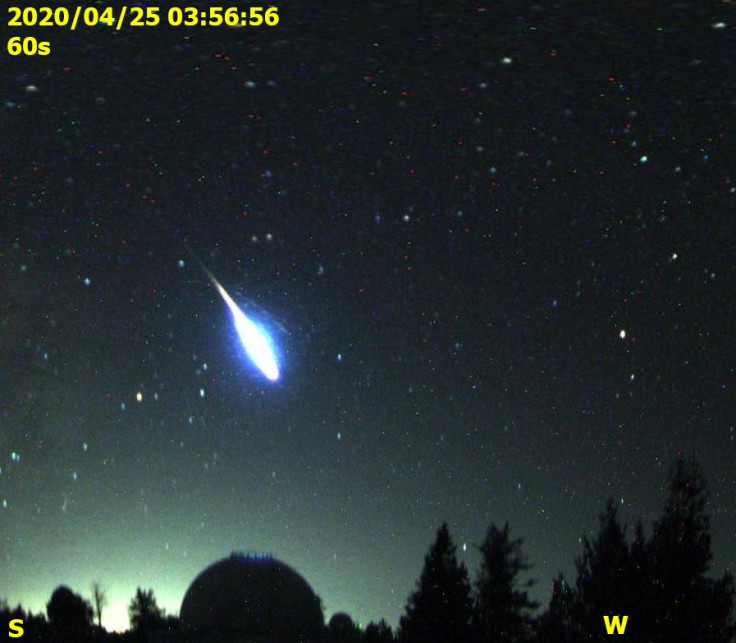Falling Meteor’s Fireball Creates Bright Flash Over Arizona

KEY POINTS
- A fireball event occurred over Arizona
- The meteor's smoke trail lasted for several minutes
- The fireball fragmented into several pieces
A fireball event caused by a meteor illuminated the skies of Arizona recently. According to a couple of eyewitness reports, the falling meteor may have broken apart in the sky and produced visible signs of fragmentation.
The fireball incident was confirmed by the American Meteor Society (AMS). A total of 11 eyewitness reports were filed through its website.
Based on the data compiled by the AMS, the fireball event happened on April 25 at around 11:00 p.m. UT or around 7:00 p.m. EDT. The event was mainly spotted from various cities in Arizona.
Based on the eyewitness reports, the fireball produced by the falling meteor had a brightness or magnitude that ranged from -5 to -19, making it brighter than the planet Venus when viewed from Earth. As noted by the eyewitnesses, the fireball appeared for about 1.5 to 3.5 seconds long.
A photo provided by the Mount Lemmon Sky Center revealed the brightness of the meteor as it fell from the sky. As seen in the photo, the object produced a bright flash as well as a trail as it streaked toward the ground.
According to some of the eyewitnesses, the meteor left a smoke trail that remained in the sky for several minutes.
“Smoke trail was very obvious and clear, duration in the sky lasted at least ten minutes. Also viewed smoke through binoculars and was a clearly defined smoke trail, which slowly dissipated over many minutes,” eyewitness Bob S. stated.
Others also noted that as the fireball streaked across the sky, it began to break apart. Eyewitness Dennis Z. of Tucson, Arizona stated in his report that the fireball produced about six pieces when it started to fragment.
According to the AMS, most meteor fireballs end up in fragmentation shortly after entering the atmosphere. This occurs as most of the materials from its surface vaporize, causing the meteor to break apart.
“The meteoroids which make up a meteor shower or storm are very fragile in nature, and are composed of a somewhat ‘fluffy’ composite of material from which all volatile material has escaped, due to many trips near the sun,” the AMS explained. “This material readily vaporizes in the upper atmosphere, and is given the descriptive name of ‘friable’ material.”
© Copyright IBTimes 2025. All rights reserved.





















